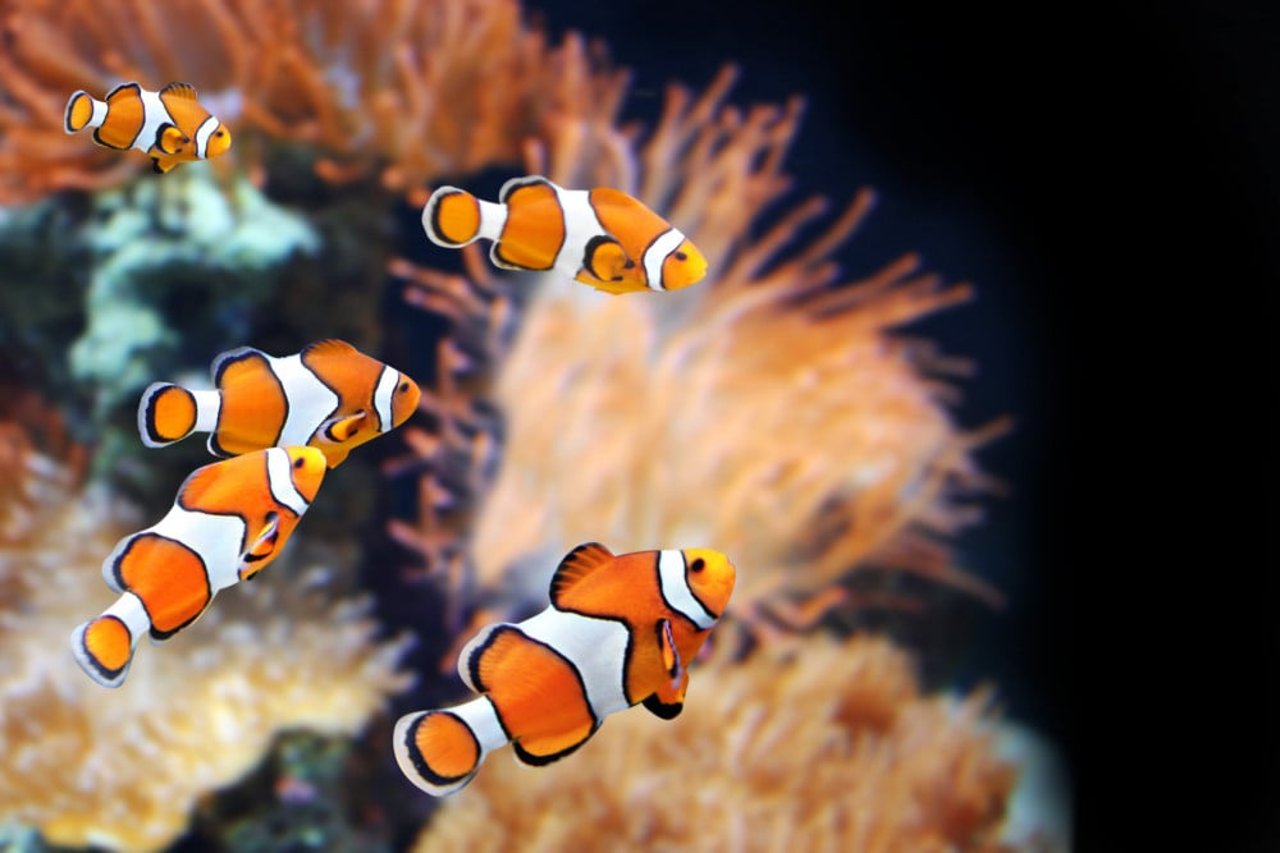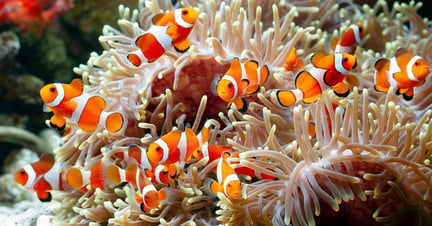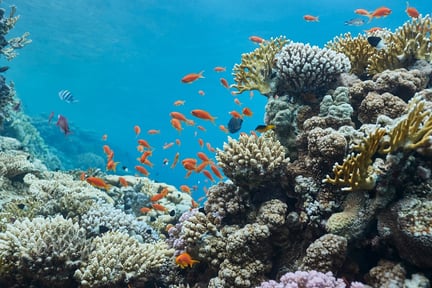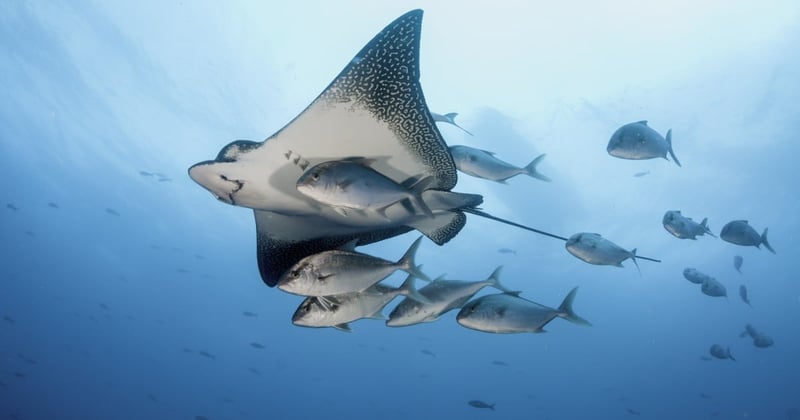
The last 20 years of research has shattered common misconceptions, revealing that fish not only feel pain but also experience a range of emotions, including positive ones. Despite this, many still harbour the idea that fish cannot feel, and that they do not suffer. Today, on World Ocean’s Day (June 8th), let’s take a deep dive into fish sentience and show once and for all, that fish welfare is important!
Fishes are caught, farmed, slaughtered, and traded in the trillions every year around the world, yet their welfare is often neglected and their capacity for feelings is usually disregarded.
In 2022, World Animal Protection researchers set out to collect evidence for fish sentience, to show the world once and for all, that we do have overwhelming evidence of fish sentience, and that their welfare must be considered. The resulting publication, “A kettle of fish: a review of the scientific literature for evidence of fish sentience” was published in the scientific journal Animals.
This review showed that fishes feel a range of emotions and feelings, including fear and distress.
What’s maybe more important than accepting fishes can feel negative emotions like pain, is recognizing the fact that they can also experience positive states like joy and pleasure.
Considering positive welfare states for animals in captivity (fish raised in fish farms, kept in aquariums, or as pets) is just as important as the negative ones. Of course, we don’t want animals to live in pain, fear, and distress (negative states), but they should also be able to experience excitement, happiness, freedom of choice, and so on (positive states) - all the emotions they would experience in the wild. By acknowledging and addressing both negative and positive welfare states, we can strive to provide the highest quality of life for animals in captivity.
Photo: FrentaN / Shutterstock
Fish sentience is a fascinating area of study that reveals their ability to experience various emotions and exhibit a range of complex behaviours.
Here are just a few interesting examples of fish sentience:
- Pain perception: Many species of fishes possess specialized nerve receptors (nociceptors) that enable them to detect and respond to painful stimuli, which are physiologically identical to those of mammals. They also show behaviours indicative of pain, such as rubbing against surfaces, reduced activity, and altered feeding patterns when injured.
- Social bonds: Many fish species form intricate social structures and display social behaviours: they can form pair bonds and community structures, conduct elaborate courtship rituals, and more!
- Cognitive abilities: Fishes exhibit remarkable cognitive skills, including spatial learning and memory. They can also recognize individuals, both within their own species and across different species.
- Communication: Fishes use various forms of communication to interact with their environment and other individuals. They emit sounds, produce visual displays, and engage in body movements to convey information, defend territories, and establish dominance hierarchies.
Fun fact: Some fishes may even fart as a form of communication! - Tool use: Some fish species have been observed using tools to achieve specific goals. For instance, some species use rocks or coral to crack open shellfish for food, showcasing their ability to manipulate objects in their environment.
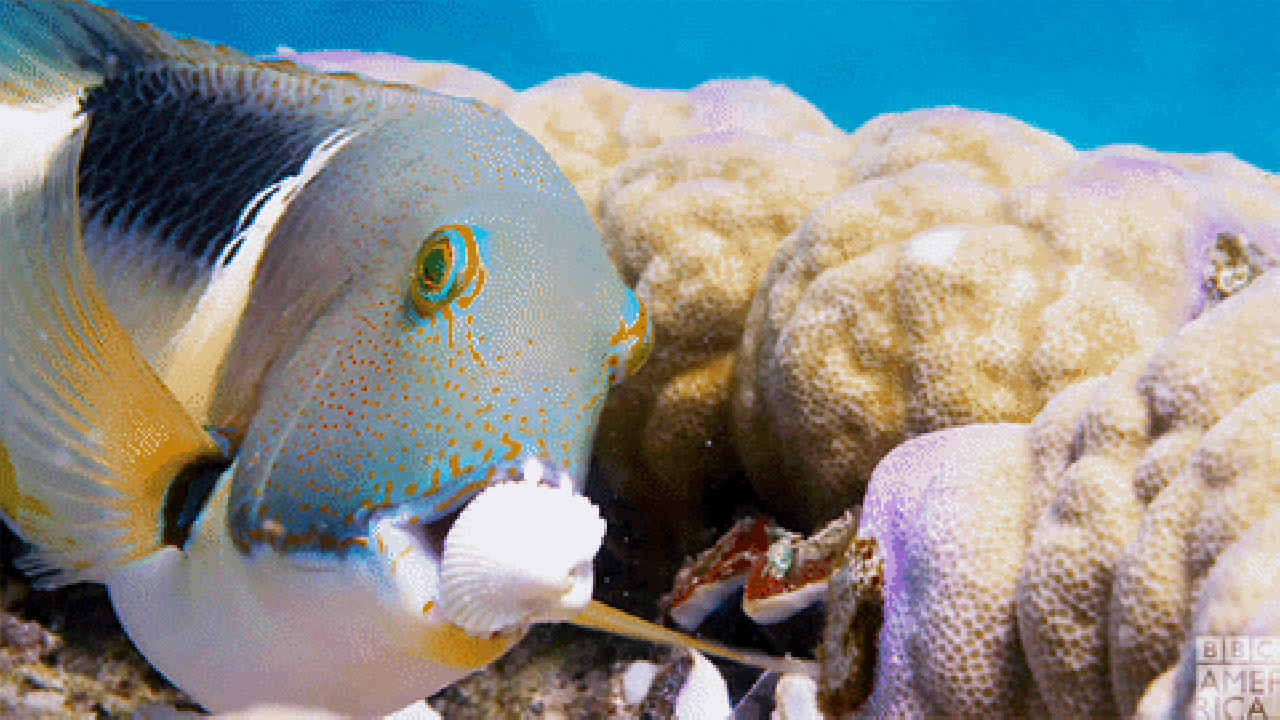
A tuskfish using a “tool”, the rock, to break open a clam! (Source: BBC Earth)
To drive change in public attitudes and industry practices, it is crucial to increase awareness of animal sentience and the undeniable scientific evidence behind it. By bridging the gap between scientific knowledge and public consciousness, we can work towards better protection and improved treatment for all animals, including these sentient aquatic beings.
Today on World Oceans Day (or any day), help us spread awareness of these amazing animals and their sentience.
Together, we can protect these animals and their habitats.
Spread the word about how amazing fish are! Tell your friends and family about some of your favourite fish facts!
* You may be wondering if “fishes” is proper grammar... While the plural form for more than one fish of the same species is fish, fishes is the correct plural form for more than one fish of different species! Now you know!
Banner photo: wildestanimal / Shutterstock
